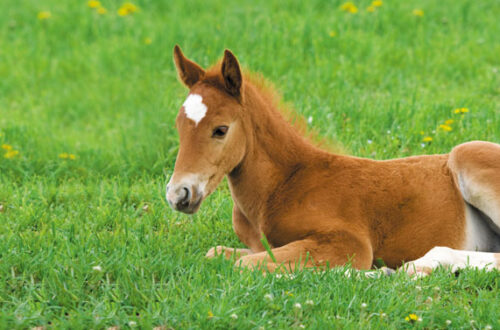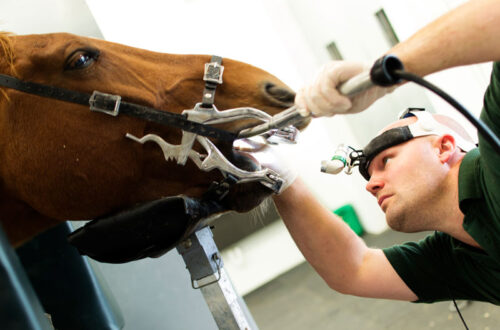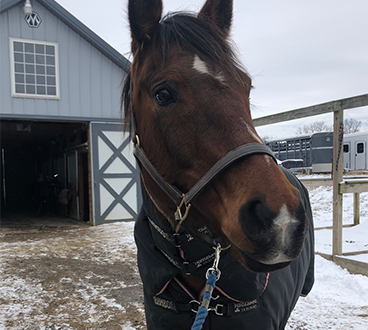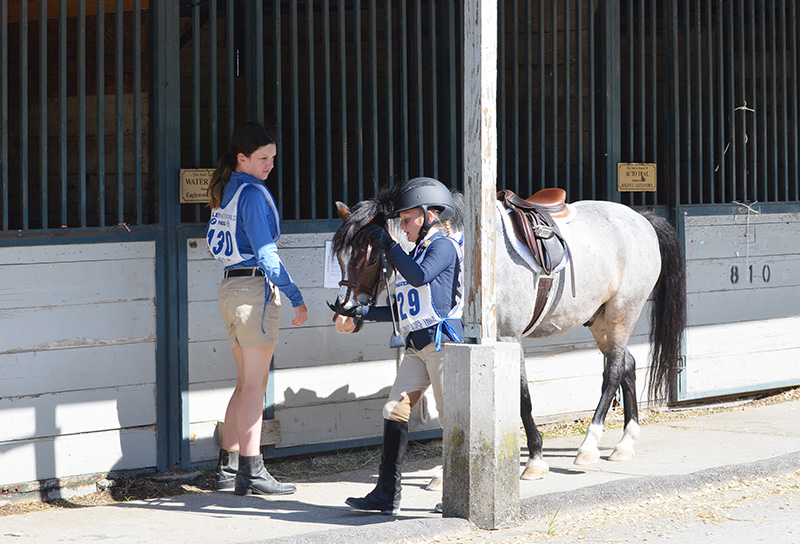
Stable Manager: A Vital Team Member
By the USPC Horse Management Committee
Horse Management is an important part of Pony Club; it is a requirement at all Pony Club mounted rallies, and each team must also have a Stable Manager. Stable Managers are unique to Pony Club, and their job is important to the team and deserves respect. The Stable Manager has the most important job on the team! Pony Club members and their parents should appreciate the skill and knowledge it requires to do this job.
In Pony Club, Stable Managers are so much more than an extra set of hands. They are an integral part of the team, because they help keep the team working together to provide the best care of horses and equipment throughout the competition. Stable Managers keep the team organized and on track, make sure mounts are properly cared for, and assist their teammates in caring for their mounts and themselves.
Rallies create an opportunity for Pony Club members to demonstrate what they have learned in Pony Club lessons as they are progressing through the Standards of Proficiency. Club members study their manuals and educational materials and learn Horse Management skills from hands-on experience—there is a lot more expected from them than just “tending to horses.” They learn the science of horses, to be responsible, to care for and appreciate horses, to be organized, and how to manage their time and their teammates’ time. And, in addition, the Stable Manager for a team learns a lot about managing people.
As we gear up for regional rallies and USPC Championships, there is sometimes a misunderstanding about the role of a Stable Manager. Below is the Stable Manager’s job description.
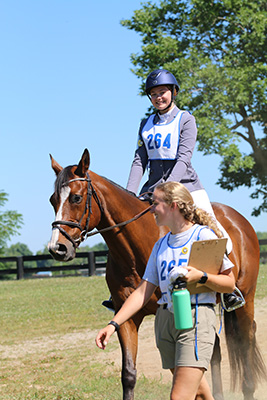
Prior to Rally
- Work closely with the Team Captain to plan ahead for all required equipment, both for the team and individually. Assist the Captain as may be requested.
- Be sure that all team members have created a stall card and assist in filling in the required information, if necessary. Plan on some sort of protection for the stall cards against weather exposure.
- Bring any equipment as indicated during planning with the Captain, and be sure that all team equipment is properly labeled with the team name (and with the club/team name/region if it is a Championships team)
- For an overnight rally only, offer to create a feed chart for use by team members at rally, and ask all team members to provide you with the required information in advance of a rally so that the feed charts can be prepared ahead of time.
At a Rally
- Upon arrival, the Stable Manager’s priority is to assist teammates in setting up stalls for the horses—care of horses should take precedence over setting up the tack room.
- Supervise the set-up of the team tack room, making certain that it is set up in an organized manner. Make sure all teammates know where equipment can be found so that they can locate any item, if needed, even if the Stable Manager is not present. Make sure all items are properly labeled (hopefully this was done at home prior to arrival at rally).
- Be present when Horse Management Judges come to check Required Equipment, if possible, and be able to explain the intended use for each piece of equipment.
- Assist in stable areas as necessary or indicated throughout the rally. A few examples are assisting in picking out stalls, refilling water buckets, grooming a teammate’s horse or tacking up, as help is requested by teammates or the Team Captain. Generally, each team member is responsible for the care of his/her own horse, stall, and personal equipment; the Stable Manager provides an extra set of hands and should never be expected to take on the total care of team horses.
- Be familiar with the team schedule as posted in the tack room and assist team members in keeping to that schedule. Check this schedule frequently and help team members on time.
- Assist team members in preparing for turnout inspections and accompany team members to their assigned station, if possible, unless it is necessary to stay in the stable area to help another team member prepare for turnout inspection.
Try to be ringside to cheer teammates on and available to assist when a ride is done. Consider what equipment or supplies should be brought to the ringside that will be useful at the end of a teammate’s ride. - At Eventing rally, be prepared to help in the Vet Box with cooling out of teammates’ mounts, and ensure all necessary equipment has made it to the Vet Box.
- Make periodic checks in the stable area to ensure that:
- The tack room area is neat and clean, and the tack room door is left closed unless team member(s) are in the tack room.
- The area in front of all stalls is kept clean and “raked or swept.
- Stall cards stay in place on all team stalls.
- Stalls are picked out, as needed. Do not allow manure to pile up, and remove any obvious wet spots.
- Lead lines are properly hung outside of stalls when not in use.
- Hay nets, if used, are properly hung and stay at proper height at all times, even when empty.
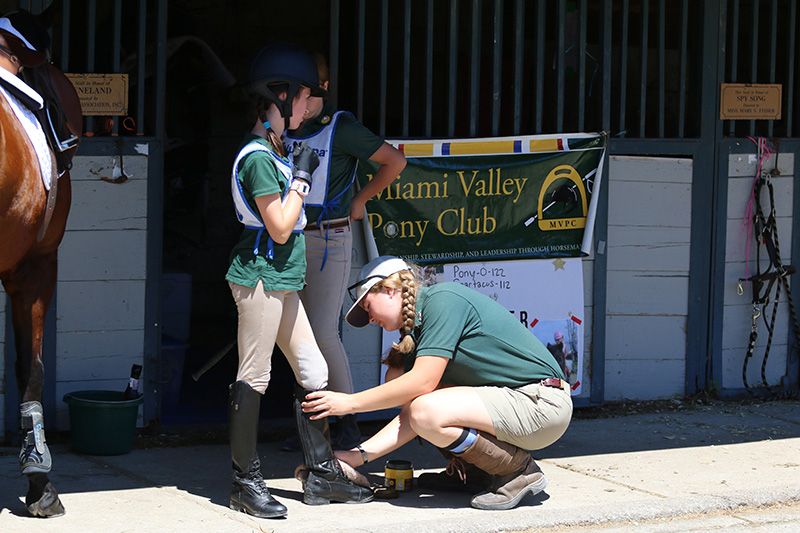
At Rally End
- Supervise the breakdown of the team tack room (competitors are sometimes allowed to start breakdown of the tack room prior to the award ceremony).
- Assist teammates in stripping of stalls as indicated or instructed at the overall briefing (most often the stalls have to be completely stripped and checked by Horse Management Judges).
- Be sure that the team tack room is swept and raked after all items are removed.
- Be sure that the area in front of each stall is swept and raked after the stall is stripped and the horse has left the stable area.
- Assist the Team Captain as indicated or delegated.
- Upon arrival at home, check all club-owned equipment and restock as instructed by your club/center leaders.
- Return equipment to the proper storage location.
- Together with the Team Captain, prepare a report to present to the club or center. Be sure to include in this report:
- What went well and what did not go well for the team. Keep personal criticism out of this report and stick with specifics, such as “lacked time-management skills” or “club utility kit was missing,” etc.
- Suggestions for preparing teams before rally/making the team better prepared for rally.
Many times, the Stable Manager is the glue that holds a team together and keeps everyone working towards the same goals. Take on the challenge of being a Stable Manager, it just might be the greatest experience you can have at a rally!
This article about the role of stable managers was originally published in the Summer 2022 issue of Discover USPC magazine. Read more content from that issue.



